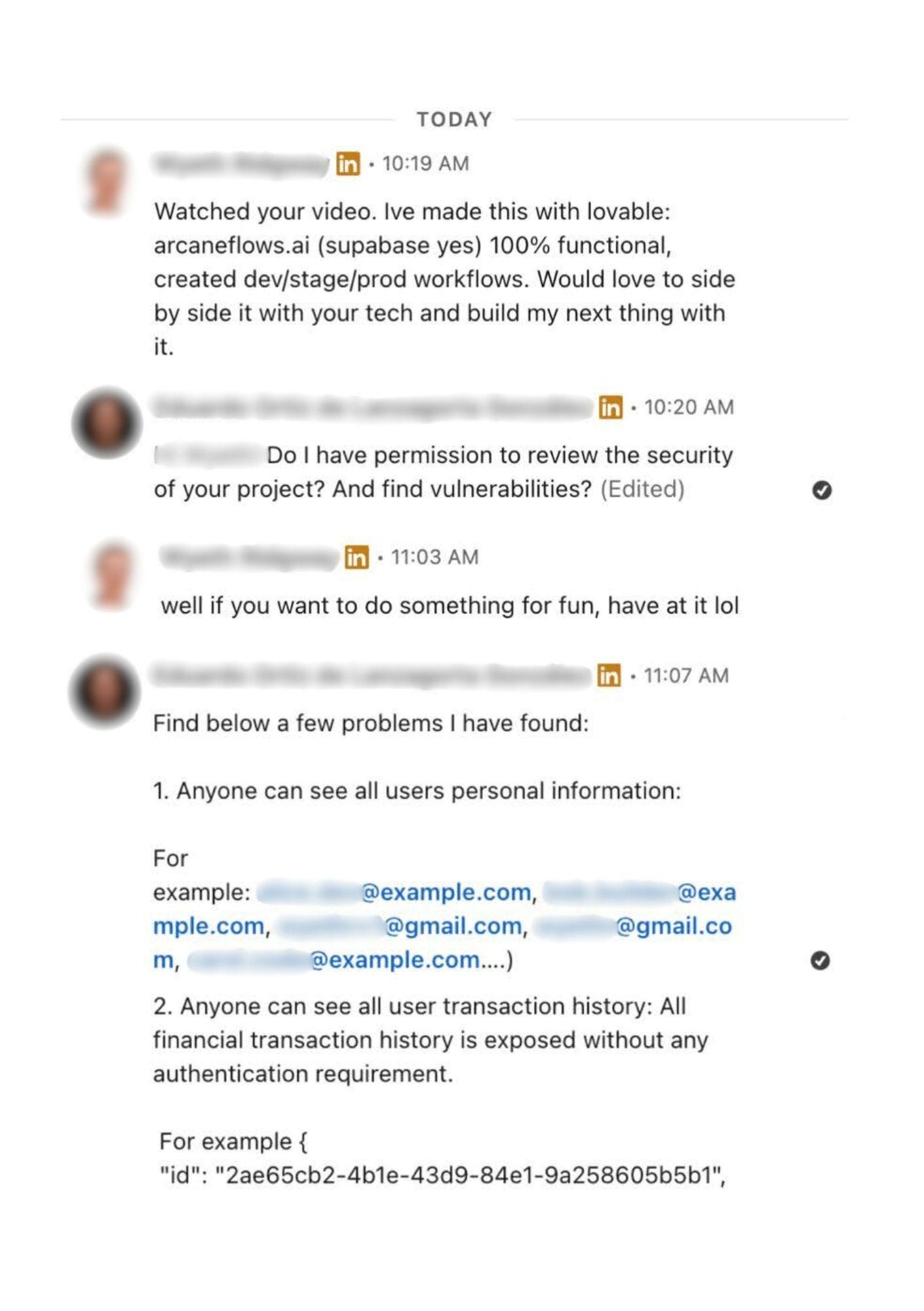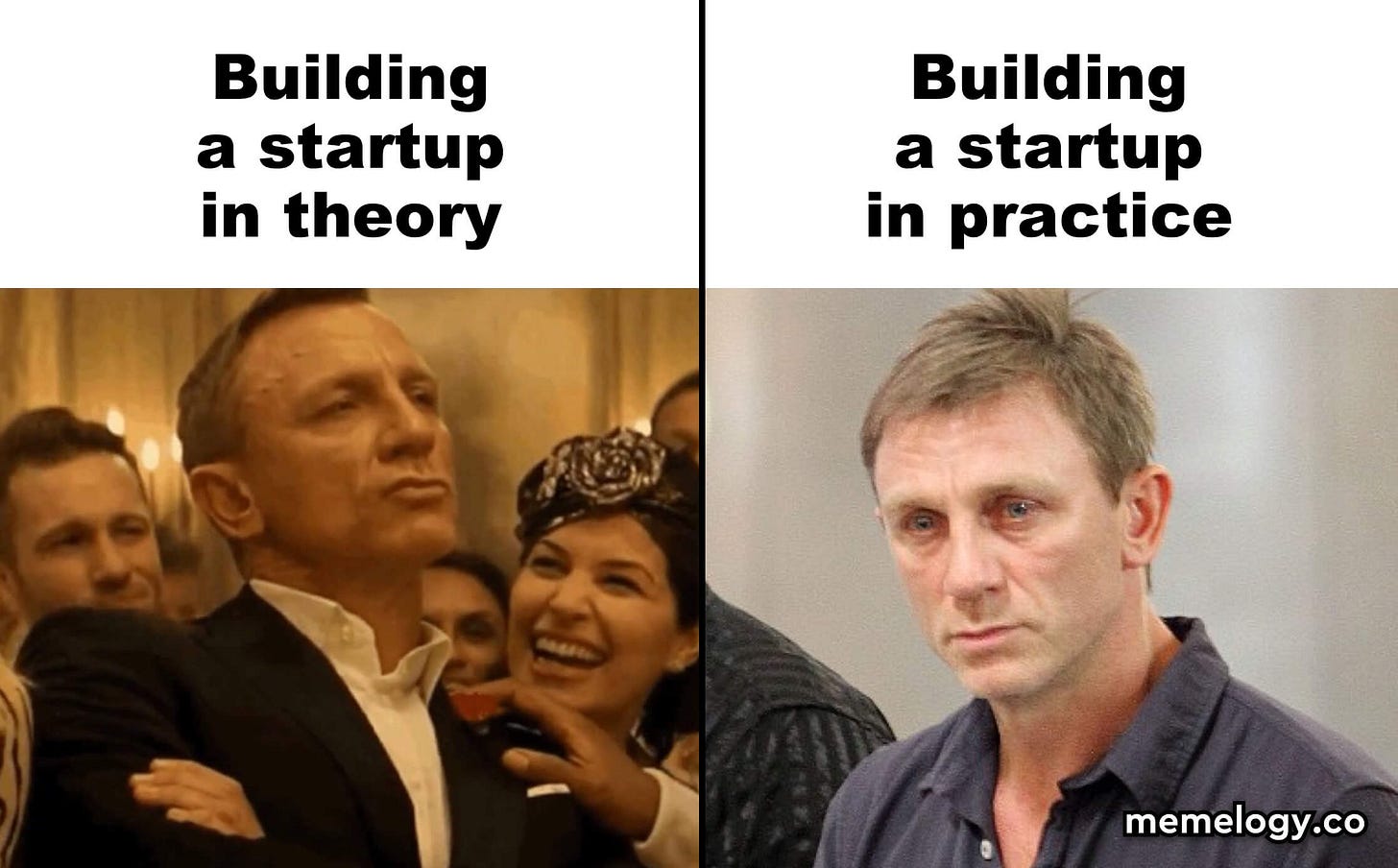🔥 When Code Meets Vibe: The Future of Building Starts Here
How founders are using intuition, AI, and new full-stack tools to turn weekend prototypes into scalable startups.
Vibecoding empowers everyday creators, people without a background in software development, to build real, working applications and tools.
Too often, non-technical founders get stuck before they even start. They’ve got the vision, but not the means to test their ideas in the real world. Instead, they spend months hunting for a technical co-founder or thousands on contractors to build early prototypes.
Vibecoding flips that on its head. With just a conversation and the right tools, founders can now build, test, and pivot at hyperspeed — moving faster in days than what used to take months. But even so, today’s popular vibecoding tools still have limits — and sometimes, they only take you part of the way.
Real founders aren’t trying to make prototypes. They’re trying to build companies.
Table of Contents
Breaking Barriers for Non-Technical Founders
The Wall Every Founder Hits
A Conversation with Edu — The Era of Real Vibe Coding
When the Vibe Meets Reality: The Security Wall
Real Stories from the Vibe-Code Frontier
From Vibe to Viable — A Founder’s Playbook
Why Founders Are Flocking to Solid (and Tools Like It)
In Conclusion — The Next Era of Vibe Coding
The Wall Every Founder Hits
It starts beautifully. You’ve got an MVP, a few users, maybe even a paying client. Then you add more layers of complexity — maybe billing logic, background tasks, or a custom data model. That’s when your stack turns on you.
Your “no-code” platform can’t handle the complexity. Your API keys live in black boxes you don’t control. And your developers, when you finally bring them in, say: “We’ll have to rebuild this from scratch.”
The magic stops. The vibe dies. That’s why we call it the wall of vibe coding — that moment when creativity meets constraint.
It’s why so many founders are shifting towards a new class of tools: ones that keep the vibe but ditch the limits.
A Conversation with Edu — The Era of Real Vibe Coding
After meeting dozens of builders navigating that transition, we spoke with Edu, the founder of Solid, to understand what’s next for the movement.
Edu: “Most of current AI builders give you a toy: a frontend shell, a prebuilt limited backend you can’t migrate from (like Base44), maybe a basic Supabase backend (like Lovable). Cool for demos… but when you want to build something serious for the long run, you hit a wall. Unlike Lovable and other prototyping tools, Solid builds real full-stack web apps (Node.js, React, TypeScript). Production-grade code you can scale, maintain, migrate and extend. Don’t waste time on AI builders that only build limited prototypes. Start right”.
Edu explained how the term “vibe coding” has outgrown its playful roots. What started as weekend prototypes and hackathon energy is now maturing into serious startups with real revenue, real users, and real infrastructure needs. The new era of vibe coding isn’t about choosing between creativity and scalability — it’s about merging them.
He pointed out that the best new tools are the ones that combine intuition and ownership. Builders still move fast, but they do it on foundations that can scale. “The magic,” Edu said, “is when creative freedom meets production-grade discipline.”
Solid isn’t the only platform leaning into this philosophy, but it’s one of the clearest examples of what mature vibe coding looks like: speed without compromise, and creative freedom that can scale.
When the Vibe Meets Reality: The Security Wall
The moment your product starts getting real users, security stops being optional.
The screenshot above shows a “friendly audit” of a vibe-coded project built with a visual builder and a hosted backend. Within half an hour, a security researcher found two severe flaws: every user’s email address was publicly visible, and full transaction histories were accessible without authentication. The builder’s interface looked clean — but under the hood, authorization lived in the UI, not at the data layer.
This is the hidden tax of speed. Most visual or AI-assisted tools abstract away logic and permissions to make early progress feel effortless. But as soon as real data or money touches your system, those abstractions become liabilities. The same friction-free layers that help you move fast often skip critical steps like row-level isolation, role-based access control, or secure key storage.
If you’re building with vibe coding tools, here’s the short checklist that separates “fun demo” from “safe product”:
Enforce permissions at the backend: the database or API, never just the frontend.
Default to least privilege: give users the minimum data access needed.
Lock down secrets: API keys and service tokens belong server-side, not in client code.
Log responsibly: redact personal identifiers before storing or exporting data.
Model simple threats: assume a curious user will test every endpoint you expose.
Vibe coding gets your idea live. Security keeps it alive. In the new wave of builder tools, the real innovation isn’t skipping code — it’s keeping control.
For founders who want to test their own builds safely, Solid has launched Overeasy — a lightweight auditing tool that helps identify data exposure and permission flaws in Lovable, Base44, and similar platforms. It’s designed strictly for auditing your own projects — reviewing anyone else’s code or data without permission is illegal.
Real Stories From the Vibe-Code Frontier
We met three founders who’ve lived the vibe-coding journey — from inspiration to iteration to infrastructure.
1. Rachel — The Productivity Startup That Outgrew Its Sandbox
Rachel and her co-founder built NovaNote, a simple productivity app designed to help small teams sync tasks visually. They started on a popular no-code platform and within weeks, they had 500 users and 20 paid trials. Momentum was strong — until it wasn’t.
Every new feature request hit a wall. The backend couldn’t handle real-time sync or complex logic. “We were spending more time fighting the platform than serving users,” Rachel told us. When she rebuilt using a flexible, code-exportable framework, everything changed. The frontend stayed the same, but she could finally add Redis queues, job schedulers, and an ML model to predict task priority.
“It wasn’t a rebuild,” she said. “It was a rebirth.” Today, NovaNote is in seed-stage talks — still built on the same vibe, just grown up.
2. Amir — The Community Founder Who Accidentally Went Viral
Amir built CommonGround, a niche online community for creative professionals, using a lightweight visual tool. “It was just me in my bedroom, putting energy into the design,” he said. But after a viral tweet from an influencer, thousands of users signed up overnight. The platform’s backend collapsed, and data leaks followed.
“I was heartbroken,” Amir admitted. “The product had soul, but it couldn’t handle scale.” Even migrating was painful — platforms like Base44 made it nearly impossible to transfer the project without rebuilding major parts from scratch. So Amir decided to start fresh on a more robust framework with full code access. He rebuilt the same product in days — this time with proper authentication, protected APIs, and error handling.
“It taught me that vibe coding is amazing for building belief,” Amir said, “but belief needs structure. The vibe has to meet reality.”
3. Priya — The Internal Tool That Became a Product
Priya was leading operations at a fintech startup where onboarding new clients was a constant drag: chasing forms, tracking compliance steps in spreadsheets, and racing to hit deadlines. “It wasn’t broken,” she said, “but it definitely wasn’t sustainable.”
One evening she built a simple dashboard — just enough to bring those fragmented processes under one roof. Within a week, the compliance team was using it daily, and instead of scrambling each morning they could open one screen and know exactly where every file and client stood.
As the startup grew, that dashboard quietly became central. The leadership team realised it wasn’t just helping their company; it was solving a problem many fintechs faced. They refined the code, cleaned up the UI, added user-management and billing layers, and launched a beta with a few partner firms.
“Vibe coding let me build the fix before we knew it was a product,” Priya said. “It turned chaos into clarity.”
Today, that tool is rolling out commercially to other fintechs managing similar onboarding and compliance workflows.
From Vibe to Viable — A Founder’s Playbook
If you want your vibe-coded prototype to survive real growth, keep these lessons close:
Own your primitives. Tools should let you access real code when you need to. Visual is fine, lock-in isn’t.
Design for handoff. Make sure developers can extend your early work without starting over.
Default to secure. Authentication, storage, and infrastructure should scale safely.
Stay close to users. Build, test, and iterate quickly — the vibe thrives on feedback.
Keep momentum. Great founders ship often and refine relentlessly.
Respect the transition. The wall is real, but it’s not the end — it’s a signal to level up your stack.
Why Founders Are Flocking to Solid (and Tools Like It)

When we asked founders like Rachel, Amir, and Priya why they turned to Solid, these were the reasons we heard again and again:
It respects intuition. You can still build fast and visually.
It respects ownership. You own your stack, your repo, your data.
It respects scale. Your MVP can evolve — no forced rebuilds.
It respects developers. Code handoff is seamless.
It respects reality. Security and infrastructure are built for production.
Solid isn’t the point of vibe coding; it’s the proof that the movement can mature. As Edu put it, “It’s not about replacing code. It’s about making creation feel natural again — and still hold up under pressure.”
In Conclusion — The Next Era of Vibe Coding
Vibe coding started as rebellion — a way for founders to move faster than the gatekeepers. But every rebellion risks becoming its own bureaucracy: all templates, no traction.
The next era is about balance, where creativity meets capability. Founders want tools that let ideas flow without capping ambition. It’s not about no-code or full-code anymore — it’s about freedom that scales.
We’re watching a new generation of builders who don’t just prototype ideas — they prototype futures. The next billion-dollar companies won’t start in spreadsheets or static design files. They’ll start with vibes that compile.
One More Thing
And Solid? They’re what happens when the movement matures; when builders refuse to choose between speed and seriousness.
Edu gave us free credits. Click here to get on the ride. If you want yours, just DM Solid on LinkedIn with the email linked to your Solid account, and they’ll add the credits for you.
And the next time you’re staring at a blank prompt, wondering whether your idea deserves to exist — just build it. But make sure it’s built on our Solid credits.






The future belongs to builders who merge speed with structure.
Loved this breakdown, very useful, especially for tools like Solid.
I also had a great guest post recently about what AI vibe coding can and can’t do (yet!): https://millennialmasters.net/p/ai-vibe-coding-capabilities-2025